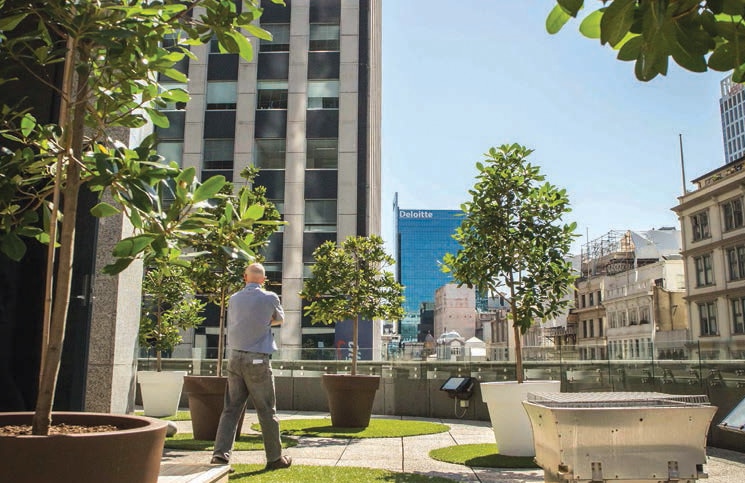Chief executive of New Zealand Green Building Council (NZGBC), Andrew Eagles, says when it comes to thinking about buildings and construction in modern cities there is one question he likes to ask – what would Aristotle say about our buildings?
And the answer is Aristotle would have a lot to be excited about.
“A wider range of organisations are now interested in sustainable buildings. Green Star, the certification primarily for offices, commercial spaces and schools, is increasingly being requested for theatres, hotels, hospitals, communities, even a car showroom.
“Green is also going deeper, and is now used to measure and reduce the impact of buildings year on year. We’ve seen this through the increased uptake of NABERSNZ, the tool to rate and improve the energy efficiency of New Zealand offices.
“Aristotle said, ‘quality is not an act, it’s a habit’. As well as knowing how to rock a toga, the Greek philosopher would’ve loved NABERSNZ.”
NABERSNZ is an independent tool backed by the New Zealand government.
Andrew points out that after the second NABERSNZ rating, buildings achieve a seven percent saving on energy use; after eight assessments this rises to 29 percent.
He says figures like these will help secure and retain blue-chip tenants. “Besides, if you don’t measure a building’s performance, how can you improve and how can you shout about your successes?”
He further points out that energy efficiency is not only good for the environment, it’s good for the owners, and they quickly discover the cost savings of going green.
“Compared to wasteful buildings, energy efficient buildings gather eight percent higher basic rent, while costing two percent less in operating expenses. Fine-tuning your heating and ventilations also pays dividends; energy-efficient buildings tend to have around 15 percent lower capital expenditure over time.”
Andrew says green buildings are also better to work in, but when it comes to designing buildings, the idea of designing them for people often isn’t prioritised.
This is despite the benefits of more access to natural daylight, better indoor air quality and designs that promote physical activity.
He points out that research from the Harvard School of Public Health found workers in certified green buildings performed 25 percent better on cognitive-function tests than workers in non-certified ones.
“If you’re a tenant in a building or you’re going to build, this might be of interest; you and your company could be achieving far more. Ask the owners if they’ve considered certifying with Green Star or NABERSNZ.”
He says in the building industry there is often a rush to complete projects and manage cost pressures, and in doing this quality can be compromised.
Yet a building that backs up its good looks with efficient operation is far more desirable in the long run.
He points out that government leases increasingly require NABERSNZ assessments, and this is helping to drive uptake of NABERSNZ.
Aristotle may have lived more than two millennia ago, but the Greek philosopher would no doubt be proud that an increasing number of buildings are embracing his concept of making quality a habit when it comes to designing green buildings for the present and the future.
“Green is also going deeper, and is now used to measure and reduce the impact of buildings year on year. We’ve seen this through the increased uptake of NABERSNZ, the tool to rate and improve the energy efficiency of New Zealand offices. “
– NZGBC chief executive, Andrew Eagles
Image provided courtesy of Alexander Goh


